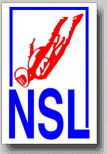
National
Skydiving
League
226 Pecan Street
Deland FL 32724
tel: (386) 801-0804
© 2003 - 2025
All Rights Reserved


226 Pecan Street
Deland FL 32724
tel: (386) 801-0804
© 2003 - 2025
All Rights Reserved

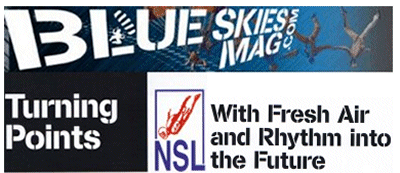
SDC Rhythm XP is the main topic this time, embedded in reflections of team projects in general. Skydiving and especially skydiving competition have a big element of individualism. The same counts for most other sports on the competitive level. However, the other sports have established long term clubs, leagues and team projects more than skydiving has so far. Consistency and continuity are the foundation to bring great benefits from media, sponsors and supporters. Rhythm is a new team project, and the NSL News took a closer look at it.
Blue Skies Mag introduces the author, Kurt Gaebel, as the founder of the National Skydiving League (NSL) and Blue Skies Mag's next-door neighbor: "The NSL website, skyleague.com, is the place to go for 4-way formation skydiving news, videos, gossip, results, analysis, and more." Thanks, neighbors...

It has always been about Arizona Airspeed and Golden Knights in the U.S. Yes, there was DeLand Majik and DeLand Fire, 4-way world champions in 2004 and 2006, but they came and they left. Too bad that Genesis/PD Blue didn't stick around. I mean, they are out there, Shannon and Ian and Kyle, but there is no Genesis any longer. Perris Fury has been around for quite a few years, but it feels like they have run their time as well. Airspeed is still there... How about Paraclete XP4 and XP8? There's a new team project that may last, hopefully. And not to forget Teiwaz, of course...
But then there is Rhythm—SDC Rhythm XP to be exact. Rhythm is already six years old; that is relatively old for a team project. A team project is like a good wine: It gets better as it ages. It has ups and downs and wins medals or not. But it's out there and offers opportunities and fun. Look at Airspeed— the 4-way and 8-way world begins to shake when Airspeed has an open slot and begins to make phone calls. THAT'S a team project.
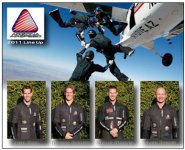
JaNette and Steve Lefkowitz are Massachusetts Institute of Technology (MIT) graduates who got addicted to 4-way formation skydiving training and competition. JaNette made her first jump in2001 and Steve followed in 2005. Yes, that gives them seven years in the sport together. It did not take too long after becoming addicted that they decided to leave their traditional careers behind for a while, maybe forever—who knows? Wouldn't be the first time...
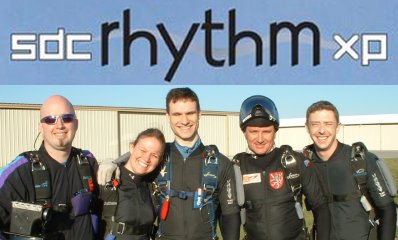
Look at their last "tryout" event. Somehow this is a scary word, isn't it, "tryout." It sounds like trial— and it is similar to a trial, at least when you do it the Rhythm way. There is an investigation of the candidates first, long before the tryout event takes place. Phone calls to friends, former and current teammates, coaches—no source of information is left out. It makes complete sense when you essentially marry a teammate whom you have to share a lot of time, money, and responsibility with for a long time, and very intensively. Their procedure worked well when they picked Rob Radez, another MIT graduate, as a new teammate. It worked well again when they decided to have Thiago Gomes in the tail slot. Chris Farina was the winner of the recent tryout, and you can expect this to work out very well again.
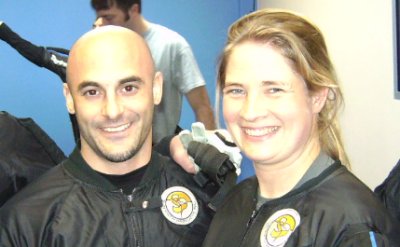
It is even more impressive considering the fact that Flemming Borup Andersen was, and is, ready to leave Denmark for a slot on a U.S. team. He tried first on the West Coast and then joined Christy and Chris at the tryouts for the Rhythm slot. Rodney Cruce was ready to change his professional life to be a part of Rhythm, and the founder of the NSL wanted to sell the business and move the family to make the team.
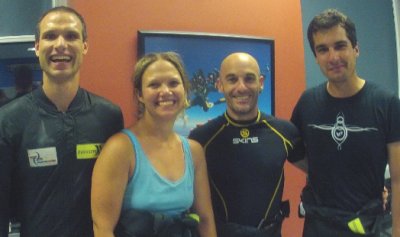
It is a new generation of formation skydiving competitors that the sport needed and that has eventually arrived, just in time. It is fresh and strong air that blows into the formation-skydiving competition sails. It is a new way to do things. It is not really inventing brand-new projects or reinventing any tools, but more like putting the pieces together in a very efficient way and making them work. It is the potential opportunity to be a part of something special and to become a role model for other young teams and competitors who prepare themselves for the next open slot.
 |
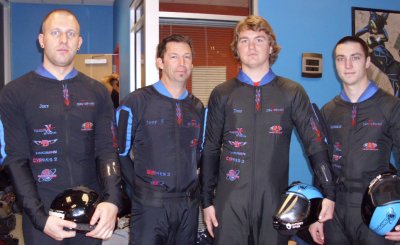
It may happen even faster and earlier. Rhythm is aiming at 2014: Win the USPA Nationals in 2013 to qualify for the World Meet in 2014. The question will then be: Has the Rhythm project become an institution like Airspeed by then? Will it continue? How many other new projects will be there by then?
Sports clubs and teams last forever in other sports. The lineups change year by year, but the names of the clubs and teams never change. That is good for the supporters who can count on continuity. The sport needs new blood, new projects, fresh air, and consistency at the same time. Rhythm has shown all of it. There is reason for great hope that Arizona Airspeed and Golden Knights will have good and more company with long-lasting team projects in the near future.